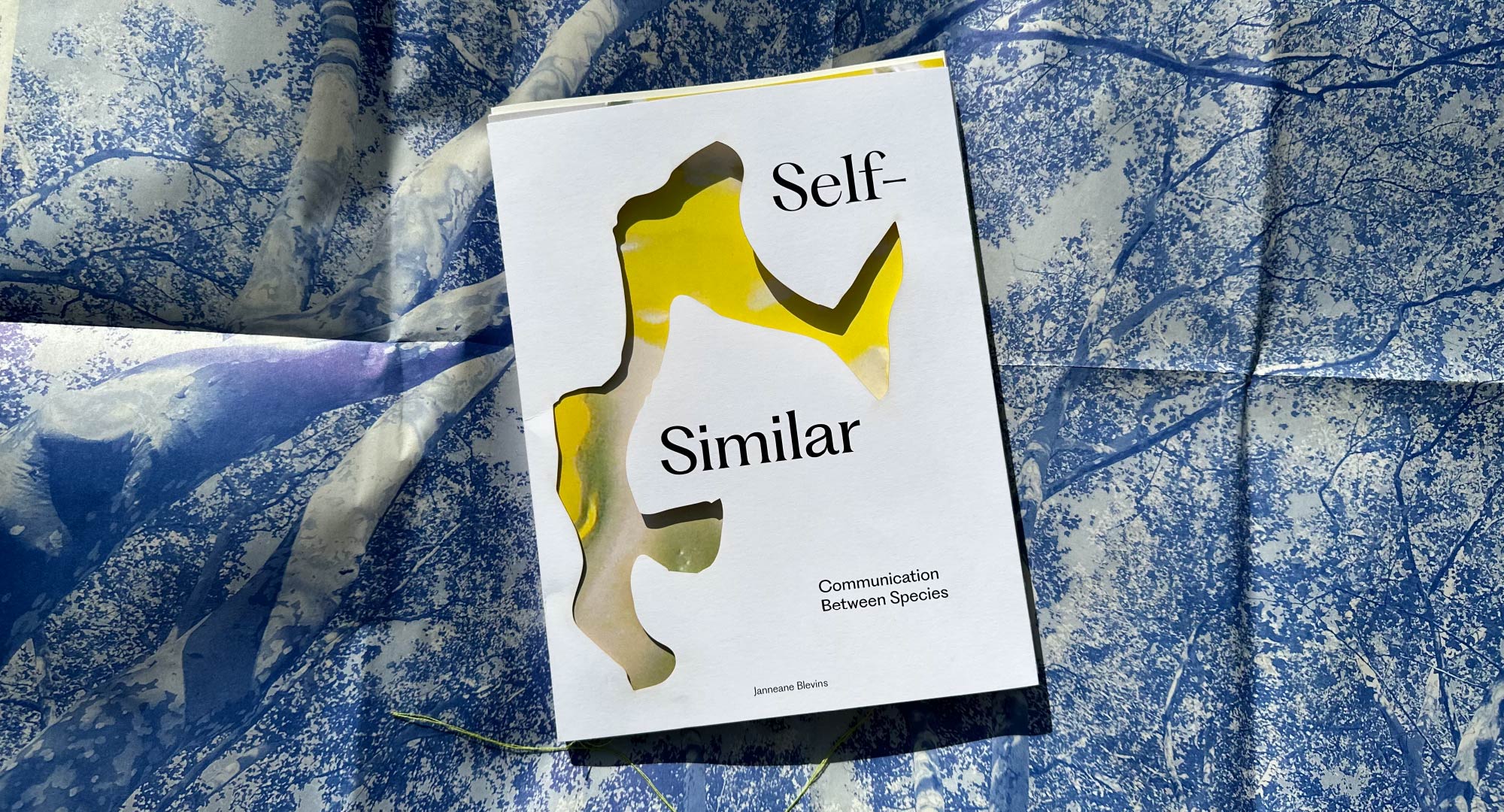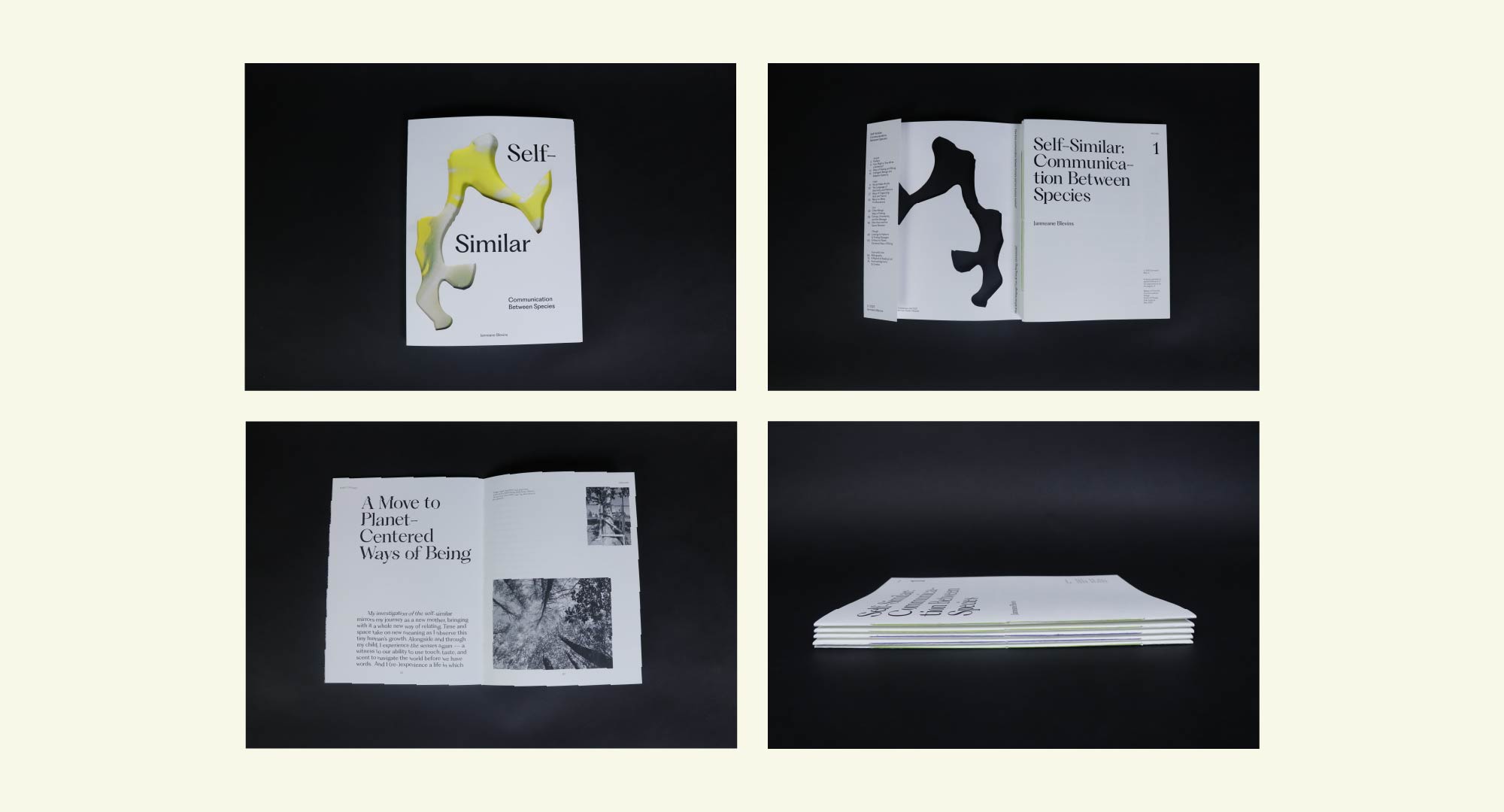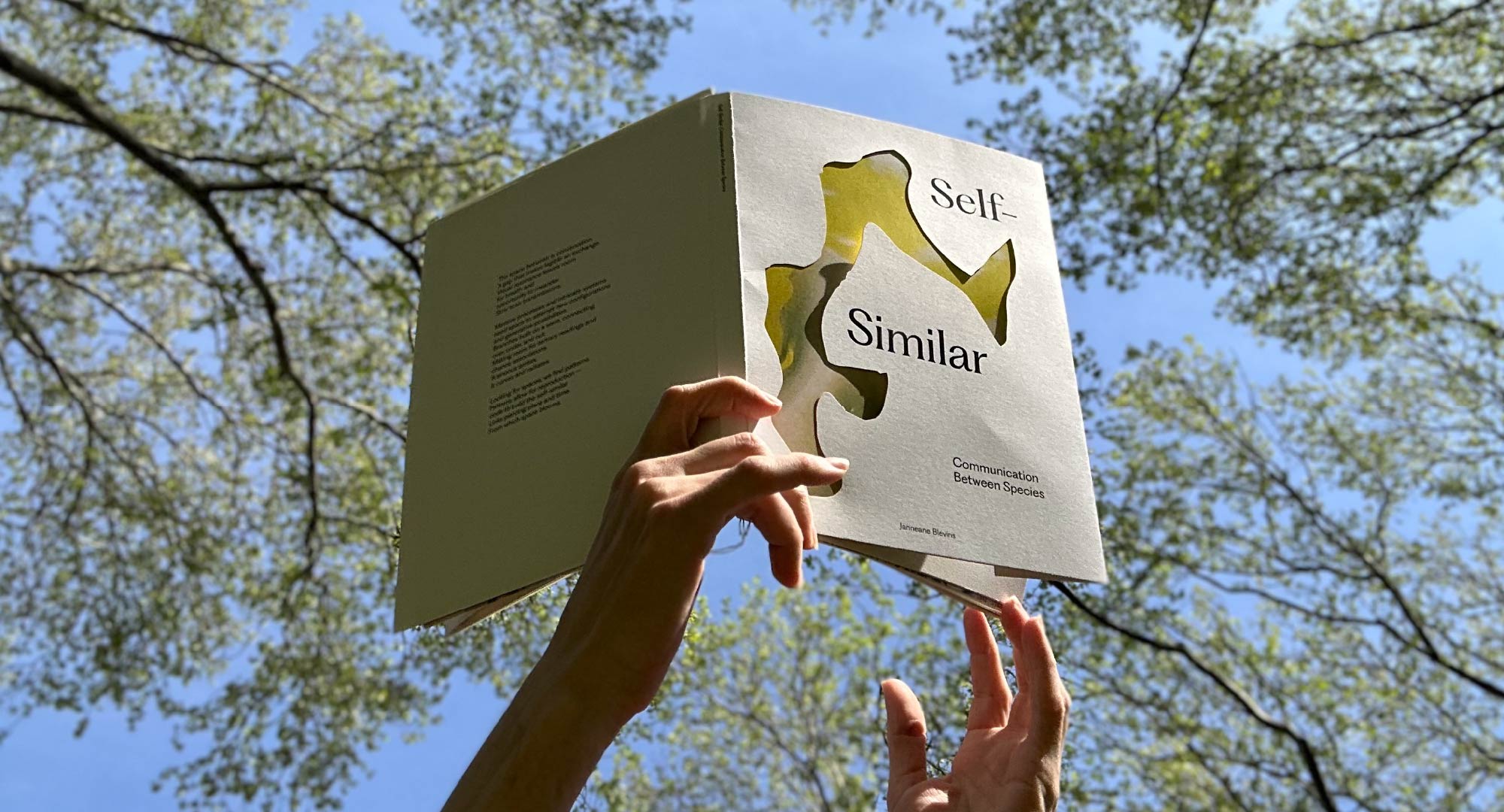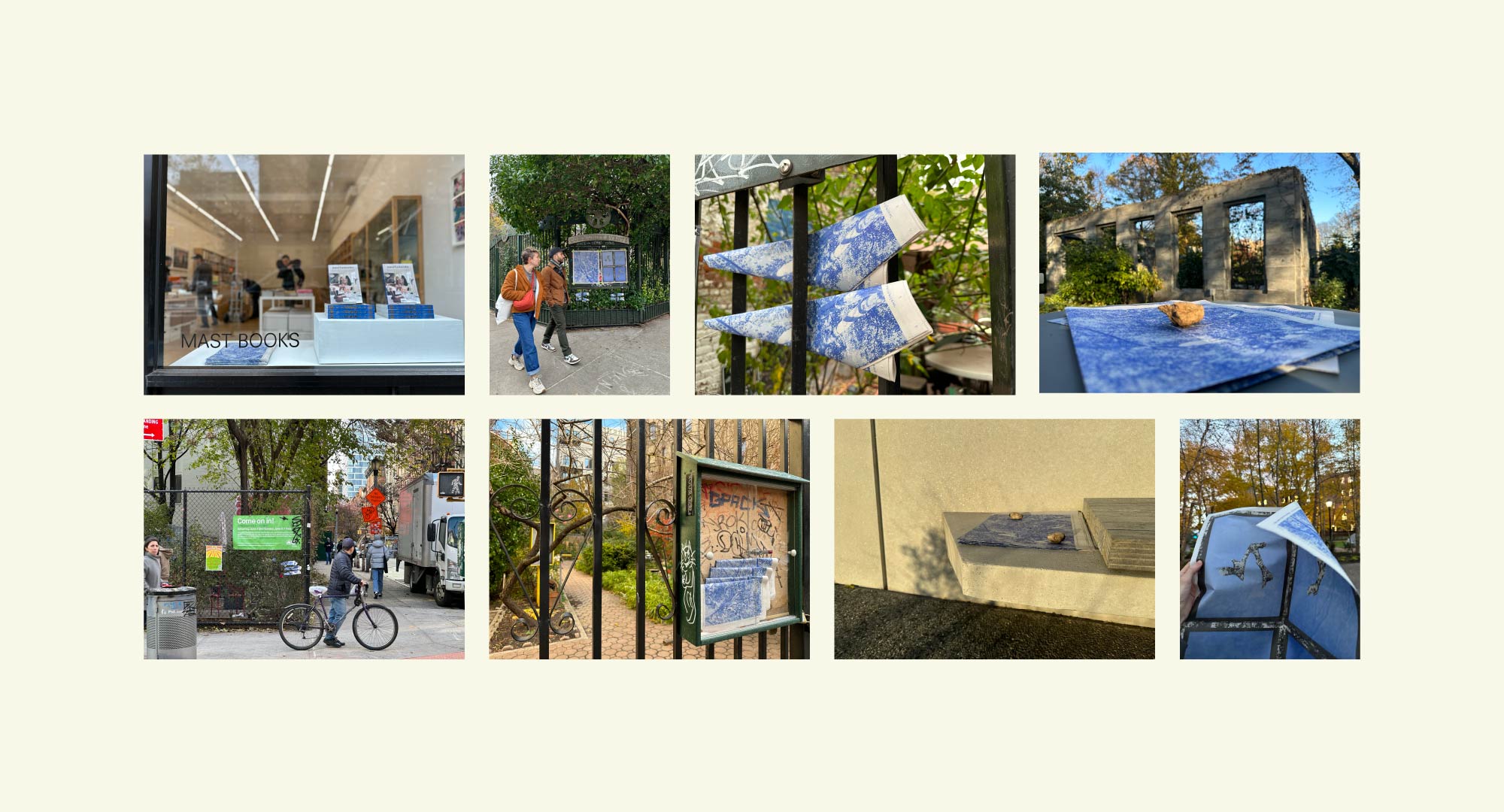Self-Similar: Communication Between Species
Janneane Blevins
Self-Similar is a body of work that explores our human search for patterns. We look for codes, signs, and messages to connect with the world and to make it legible. Applying ethnographic and semiotic strategies to plants, my work includes translations of moss, trees, mold, and fungi communication into visual patterns, glyphs, and scale-free arrangements, using pattern-finding and juxtaposition methods. Self-Similar explores non-human communication systems in order to open up and propose new frameworks for humans to interact with fellow life on Earth.

Self-Similar, Book

Self-Similar, Book Detail
For the design of my thesis book, I considered how to manifest the concept of making-with and nonhuman perspectives. The hand-bound string relates to mycelia threads; the type morphs in size and serif, reflecting shifts in scale from macro to micro; and through the laser-cut cover peeks a microscopic view of physarum.
Self-Similar, Book

Slow Scan Transmissions
For my capstone project, I found inspiration in the work of Muriel Cooper’ and slow-scan television. My transformation of this method provided a mechanism to tune into another species’ dimension. Slow Scan Transmissions speculates on messages sent from trees to humans. Glyphs are formed by the space between trees in conversation. Ligatures that shift with seasons and growth are ephemeral as the clouds, but they also recombine in recognizable patterns.
Slow Scan Transmissions Distribution
The capstone project was distributed as a mass-run broadsheet of 1000 copies circulated in botanical and community gardens, beloved and threatened parks, along with bookshops and community-run spaces.
Physarum Systems
In earlier work leading up to my thesis, I cultivated physarum polycephalum in a process of chance and observation. Through sympoiesis, I relinquished control to reveal how another species develops systems, shares information, and creates patterns. This microscopic documentation highlights the incredible, otherworldly visuals – at once primordial and futuristic, an elastic sense of time for an organism that can carry us to the deep past and far future.
Moss Cosmos and Moss Bound
My studies of moss were informative to my methods and sense of scale and juxtaposition. Spend a week observing moss, and your whole vision changes. Your eyes dart to the cracks, the corners, the seams – the moss knitting the tree to the earth, binding the city to the ground. One small patch contains a whole universe. Moss Cosmos is a poster juxtaposing macro and microscopic images of moss with map and space views. Moss Bound imagines a material method through which we can tell and receive these stories.
The thesis process prompts new questions as I continue my work. How do we think beyond language? How do we switch from a mindset of fear to joy – while still staying with the trouble? What new possibilities will we find in the space between?